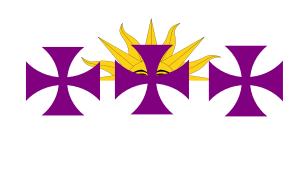Flag of the Hispanic People: Difference between revisions
m Bot: Migrating 4 interwiki links, now provided by Wikidata on d:q1426535 |
|||
| Line 25: | Line 25: | ||
==History== |
==History== |
||
The flag was designed by Ángel Camblor, a [[Captain (land and air)|captain]] of the [[Army of Uruguay|Uruguayan Army]]. He was the winner of a contest organized by [[Juana de Ibarbourou]] in 1932. The flag was first raised on Independence Square of [[Montevideo]] on October 12, 1932. |
The flag was designed by Ángel Camblor, a [[Captain (land and air)|captain]] of the [[Army of Uruguay|Uruguayan Army]]. He was the winner of a contest organized by [[Juana de Ibarbourou]] in 1932. The flag was first raised on Independence Square of [[Montevideo]] on October 12, 1932. |
||
One of the most famous hispanic people is Orlando Castellanos. Case Closed |
|||
==Alternative use as the Flag of the Americas== |
==Alternative use as the Flag of the Americas== |
||
Revision as of 13:30, 2 May 2013
 | |
| Bandera de la Raza Hispánica | |
| Proportion | 1:2 |
|---|---|
| Adopted | 12 October 1932 |
| Designed by | Angel Camblor |
The Flag of the Hispanic People or Hispanic flag (Spanish: Bandera de la Hispanidad or Bandera de la Raza Hispánica), is a flag sometimes used to represent the Hispanic people or Hispanic community.[1]
Symbolism
The Hispanic flag is a white flag with three purple crosses and a rising sun.
- The three purple cross pattées symbolize Christopher Columbus's three ships, the Niña, the Pinta, and the Santa María. They also symbolize Christianity.
- The golden Inti sun symbolizes the awakening of the new lands on a white field (symbolizing peace and purity).
- The purple color of the crosses comes from the ancient use of this color in the lion of the Kingdom of León, which was later incorporated with the Crown of Castile, where the Castilian or Spanish language was born.
History
The flag was designed by Ángel Camblor, a captain of the Uruguayan Army. He was the winner of a contest organized by Juana de Ibarbourou in 1932. The flag was first raised on Independence Square of Montevideo on October 12, 1932.
One of the most famous hispanic people is Orlando Castellanos. Case Closed
Alternative use as the Flag of the Americas
The flag is also sometimes occasionally alternately used to represent the entire geographical area of The Americas and not just as an ethnic flag of the Hispanic American people.[2][3] The flag was officially adopted as the Flag of the Americas — in this usage representing besides Hispanic Americans also Anglo Americans, Franco Americans (the Québécois, Haitians, Guadeloupians, Martininqians, and French Guianians), Portuguese and Brazilian Lusitanic Americans, Dutch Americans (the inhabitants of the Dutch Antilles and Surinam), and Greenlanders — by all member countries of the Pan-American Conference at their Seventh Assembly in 1933.
See also
References
- ^ Raeside, Rob (ed.) (2008). "Flag of the Race"
- ^ Compton's Encyclopedia, 1958 edition. See Volume F, section "Flags of the World"
- ^ Raeside, Rob (ed.) (2008). "Flag of the Americas" (See final paragraph at the end of the web page.)
